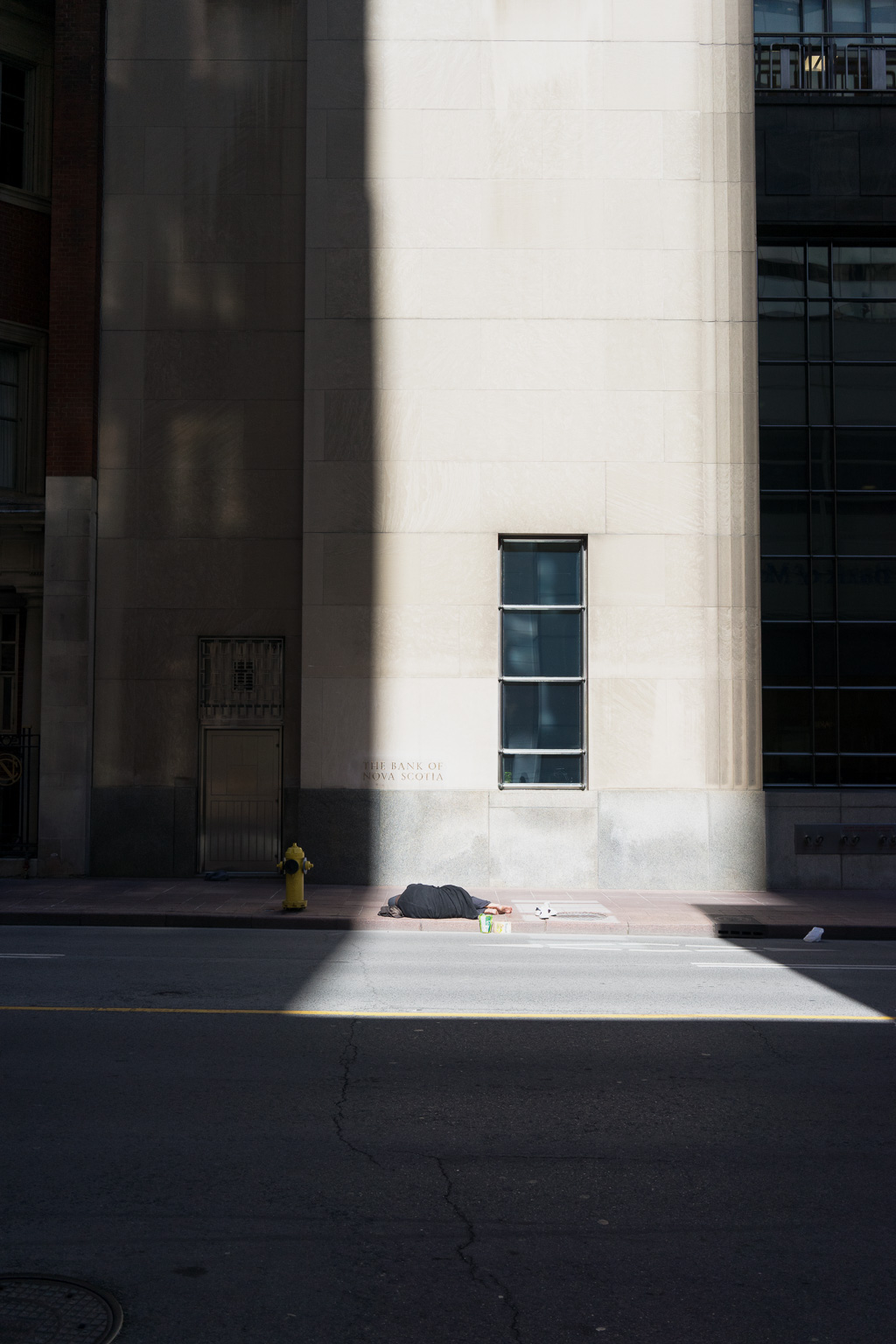On the afternoon of May 12th, I was walking down Bay Street, approaching King, Toronto’s financial district, the place where Canada’s money goes to grow. Its institutions are fabled the world over for the fact that they survived the global financial meltdown precipitated by the Lehman Brothers collapse. They did better than survive; they thrived, attracting more capital precisely because they had borne out the crisis unscathed.
Late afternoon on a bright spring day. The air is crisp and cool and a strong wind blows from the west. Sunlight shines through the space between two office towers and strikes the wall of the building on the east side of Bay Street. The light reflected from the wall is bright and washes out the tiny letters that identify the building, but I don’t need the letters; I know it as the original Toronto headquarters for the Bank of Nova Scotia. It’s been rebranded as Scotiabank. Later, in front of my computer at home, I look up the only fact that really matters. Based on market capitalization, Scotiabank is worth nearly US $79 Bn which makes it the 197th largest corporation in the world, 5th largest in Canada.
The aesthete in me loves the stark contrast between bright sunlight and deep shadow. Then I notice the man lying on the sidewalk below the tiny letters. The warmth of the sunlight catches him full on the back and on the soles of his bare feet. It immediately strikes me that this is a scene of contrasts, light and dark, wealth and poverty, pavement and flesh, institution and individual, structure and indifference. The scene paralyses me. My mind reels at the enormity of the contrasts. I feel called to respond but don’t know how. I make my shot and walk away, head bowed because I know it’s a great shot, but so what?
